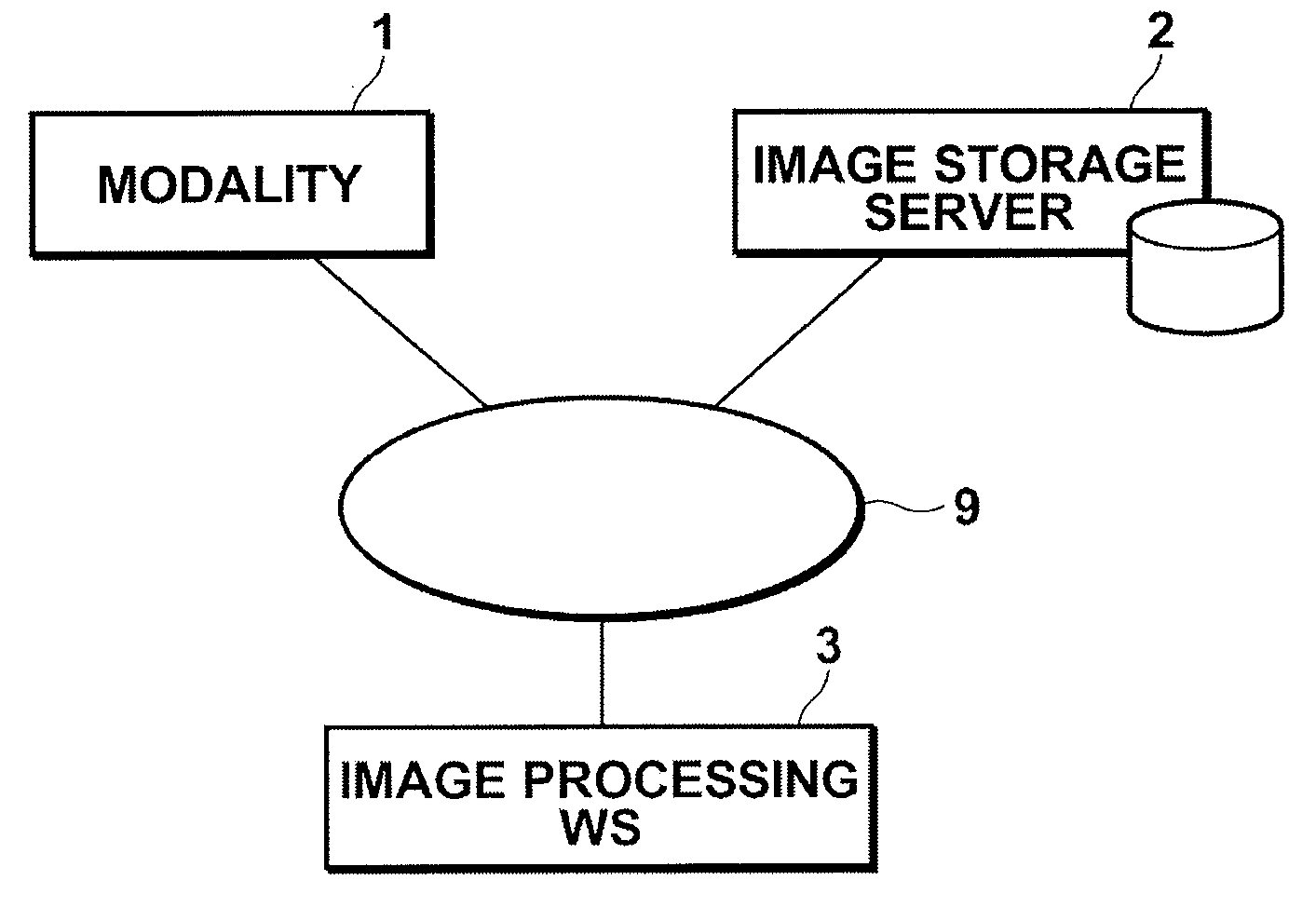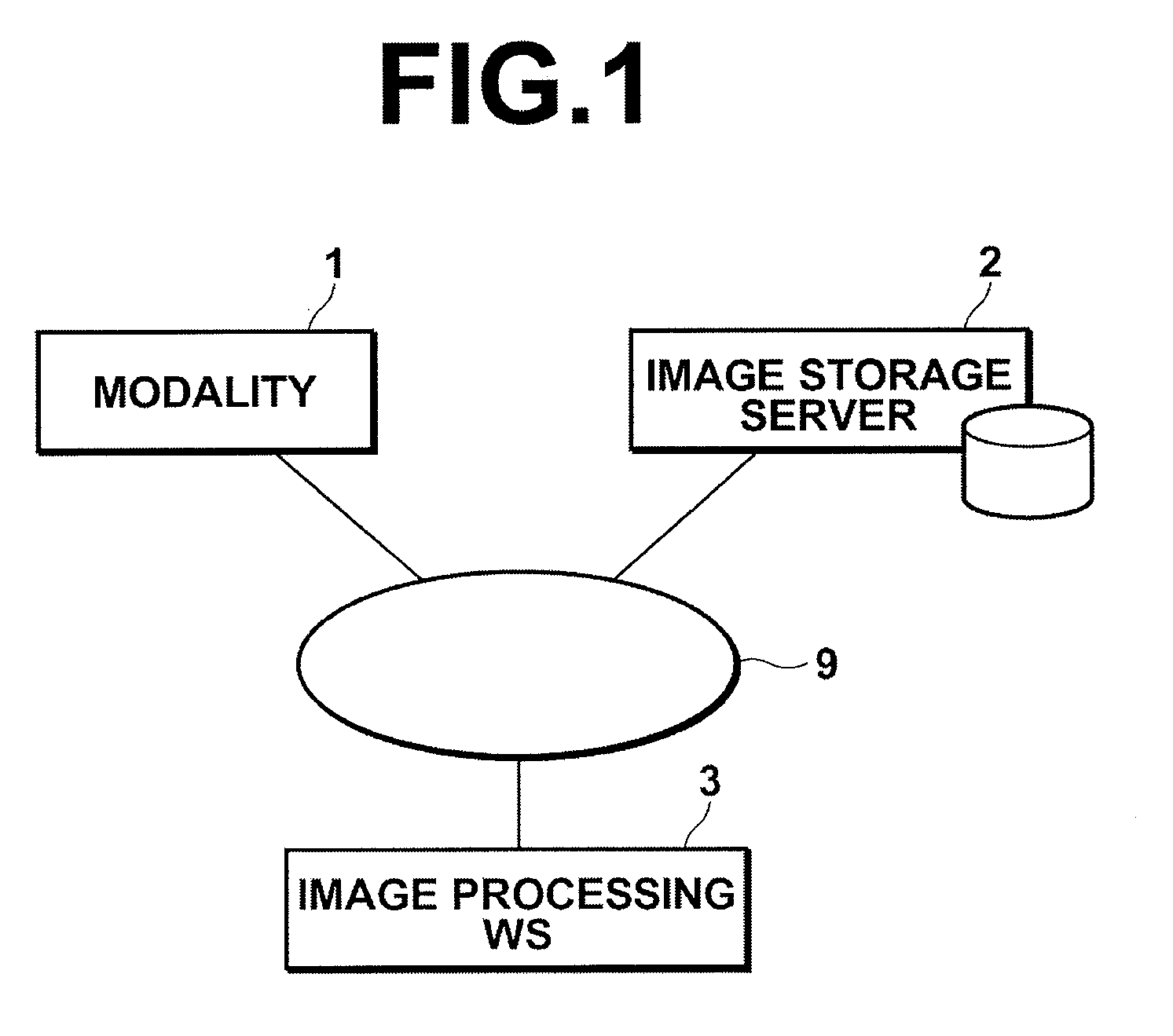Medical image diagnostic apparatus and method using a liver function angiographic image, and computer readable recording medium on which is recorded a program therefor
a technology of angiographic image and diagnostic apparatus, which is applied in the field of medical image diagnostic, can solve the problems of inability to accurately meet the needs of conventional technologies, difficult to understand the detail of a time series variation of the signal value of a region of interest, and unrealistic to make a judgment based only on a parameter image in an actual image diagnosis site, etc., to achieve easier and more appropriate image diagnosis and improve image reading efficiency.
- Summary
- Abstract
- Description
- Claims
- Application Information
AI Technical Summary
Benefits of technology
Problems solved by technology
Method used
Image
Examples
first embodiment
[0091]In the invention, modality 1 includes an MRI system. The MRI system is capable of performing dynamic imaging in which three-dimensional medical images (voxel data) Vt0, Vt1, - - - , Vt6 (hereinafter, collectively referred to as three-dimensional dynamic images Vtn) of an abdomen (including liver) are obtained before administering a contrast agent that includes gadoxetate sodium (Gd-EOB-DTPA) as an active ingredient (EOB contrast agent) and, for example, 20 sec, 1 min, 2 min, 5 min, 10 min, and 20 min after administration of the EOB contrast agent. Here, as described above, the EOB contrast agent has a property to be selectively absorbed in normal liver cells, so that three-dimensional dynamic images Vtn obtained by such imaging correspond to liver function angiographic images.
[0092]Image storage server 2 is a computer for storing image data of three-dimensional dynamic images Vtn obtained by modality 1 and of medical images generated through image processing in image processin...
second embodiment
[0139]As described above, in the present invention, liver segments R3S1, R3S2, - - - in a three-dimensional morphological image V3 representing an anatomical structure of a liver are identified and then liver segments R2S1, R2S2 - - - in three-dimensional dynamic images V2tn, in which liver function is imaged, corresponding to liver segments R3S1, R3S2 - - - identified in the three-dimensional morphological image V3 are identified using a moving direction / amount DR of each pixel. Thus, even when three-dimensional dynamic images V2tn do not clearly represent the anatomical structure of a liver, this allows evaluation values F2S1, F2S2, - - - respectively representing functional levels of liver segments R2S1, R2S2, - - - to be obtained from the three-dimensional dynamic images V2tn by supplementing information of the anatomical structure of the liver by way of the three-dimensional morphological image V3.
[0140]In the embodiment described above, the combination of segment identificatio...
third embodiment
[0162]As described above, according to the present invention, region of interest setting unit 132 respectively sets liver regions of interest VOI[1], VOI[2], - - - , VOI[8], which are positionally correspond to each other between each time phase, in liver angiographic images V[1], V[2], - - - V[8] obtained in a contrast examination using an EOB contrast agent that reflects blood flow and function of a liver in an image. Then, based on the liver angiographic images V[1], V[2], - - - V[8] in the respective time phases, local image generation unit 134 generates, with respect to each time phase, local sectional images LIA[1]·LIC[1]·LIS[1], LIA[2]·LIC[2]·LIS[2], - - - , LIA[8]·LIC[8]·LIS[8] representing regions of interest VOI[1], VOI[2], - - - , VOI[8], and display control unit 136 causes the generated local sectional images with respect to each time phase LIA[1]·LIC[1]·LIS[1], LIA[2]·LIC[2]·LIS[2], - - - , LIA[8]·LIC[8]·LIS[8] to be displayed side-by-side in one display screen. This al...
PUM
 Login to View More
Login to View More Abstract
Description
Claims
Application Information
 Login to View More
Login to View More - R&D
- Intellectual Property
- Life Sciences
- Materials
- Tech Scout
- Unparalleled Data Quality
- Higher Quality Content
- 60% Fewer Hallucinations
Browse by: Latest US Patents, China's latest patents, Technical Efficacy Thesaurus, Application Domain, Technology Topic, Popular Technical Reports.
© 2025 PatSnap. All rights reserved.Legal|Privacy policy|Modern Slavery Act Transparency Statement|Sitemap|About US| Contact US: help@patsnap.com



